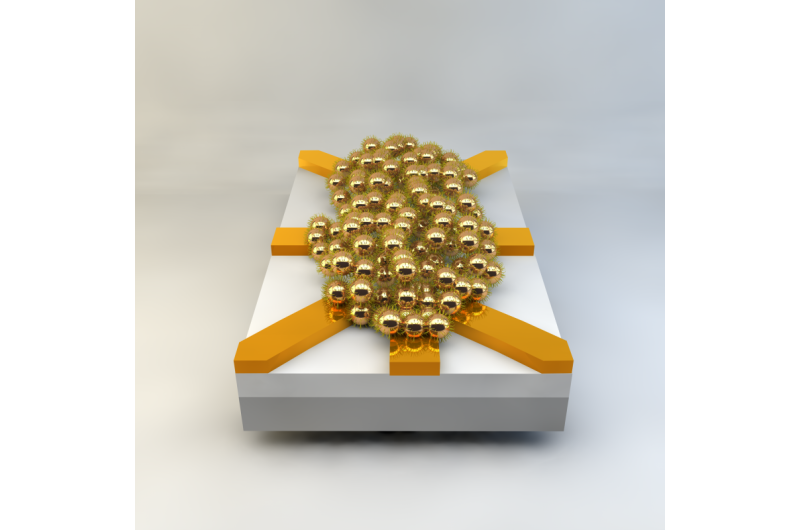Working electronic circuits produced through artificial evolution

Researchers of the MESA+ Institute for Nanotechnology and the CTIT Institute for ICT Research at the University of Twente in The Netherlands have produced working electronic circuits that have been developed in a radically new way, using methods that resemble Darwinian evolution. The size of these circuits is comparable to the size of their conventional counterparts, but they are much closer to natural networks like the human brain. The findings promise a new generation of powerful, energy-efficient electronics, and have been published in the prominent leading British journal Nature Nanotechnology.
The development of digital computers is one of the greatest successes of the 20th century. In recent decades, computers have become increasingly powerful by integrating ever smaller components on silicon chips. However, it is becoming difficult and expensive to pursue miniaturisation. Current transistors consist of only a handful of atoms, and it is a major challenge to produce chips in which the millions of transistors have the same characteristics. Another drawback: Energy consumption is reaching unacceptable levels. The need for alternatives is obvious, and researchers are turning to natural processes. Evolution has led to powerful computing substrates like organic brains, which solve complex problems in an energy-efficient way. Nature has evolved complex networks that can execute many tasks in parallel.
The approach of the researchers at the University of Twente is based on methods that resemble those found in Nature, using networks of gold nanoparticles for the execution of essential computational tasks. Unlike conventional electronics, this process doesn't involve designed circuits. By using 'designless' systems, the researchers avoid costly design mistakes. The computational power of their networks is enabled by applying artificial evolution. This rapid evolution takes less than an hour, rather than millions of years. By applying electrical signals, a single network can be configured into 16 different logic gates. The evolutionary approach works around—or can even take advantage of—possible material defects that can be fatal in conventional electronics.
This is the first time that researchers have realized robust electronics using artificial evolution at distance scales competitive with commercial technology. This paves the way for executing more complex tasks that are difficult to execute on current digital computers or that take a lot of time and energy. The researchers envisage a spectrum of possible applications, including wearable electronics or medical technology.
More information: "Evolution of a Designless Nanoparticle Network into Reconfigurable Boolean Logic," Nature Nanotechnology DOI: 10.1038/NNANO.2015.207
Journal information: Nature Nanotechnology
Provided by University of Twente


















